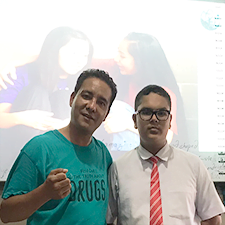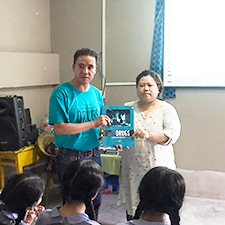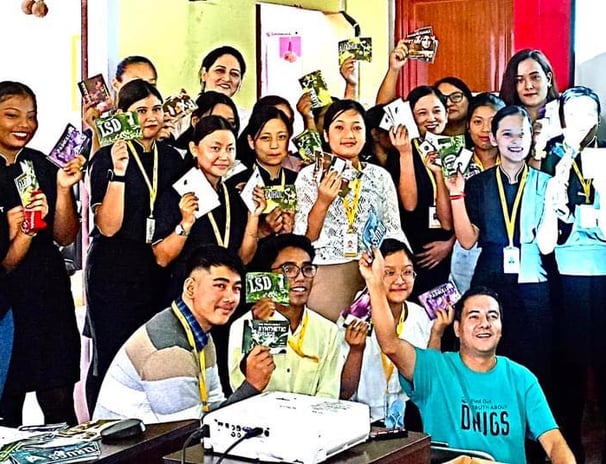
Truth About Substance Abuse
Empowering youth through education and support against substance abuse.


Youth Support
Identifying signs and providing essential resources for help. Empowering Youth Against Substance Abuse
Substance abuse remains a significant public health issue, and empowering youth to make informed, healthy choices is key to combating its prevalence. By providing the right education, support systems, and community involvement, we can equip young people with the tools they need to resist peer pressure, understand the consequences of substance abuse, and build a strong foundation for a healthy future.
Here are some effective strategies for empowering youth against substance abuse:
Education and Awareness
Early Education Programs: Introduce substance abuse prevention education at an early age in schools. Teaching kids about the physical, emotional, and psychological effects of drugs and alcohol helps them understand the risks.
Real-Life Stories: Sharing stories from individuals who have struggled with substance abuse can resonate more deeply with young people and make the dangers more tangible.
Building Life Skills
Decision-Making and Critical Thinking: Helping youth develop the ability to make informed decisions and think critically can enable them to resist peer pressure and the temptation to experiment with drugs.
Stress Management: Teaching coping strategies for dealing with stress, anxiety, and difficult emotions can prevent young people from turning to substances as a form of escape.
Communication Skills: By learning how to communicate assertively, youth are more likely to stand up to peer pressure and confidently say no when offered substances.
Positive Role Models and Mentorship
Peer Leadership: Encouraging youth to take on leadership roles within their community can inspire them to set positive examples for others. Peer-led initiatives often have a powerful influence on other young people.
Mentorship Programs: Connecting youth with mentors who can guide them through life challenges and offer positive support can be crucial in steering them away from substance abuse.
Engaging Parents and Families
Parent Education: Parents should be educated on the signs of substance abuse, how to communicate effectively with their children, and how to set clear boundaries.
Family Support Networks: Creating family support groups where parents can share experiences and learn strategies for dealing with substance abuse can provide a strong safety net for at-risk youth.
Creating Safe Spaces and Alternatives
Youth Centers and After-School Programs: Providing safe, drug-free spaces for young people to engage in positive activities like sports, arts, and community service can help keep them occupied and out of situations where substance use is prevalent.
Youth Sports and Recreation: Organized sports and recreational activities offer opportunities for youth to bond, stay active, and build self-esteem—all of which are protective factors against substance abuse.
Community and Policy Involvement
Community-Based Initiatives: Community organizations, schools, and local governments should work together to promote substance-free environments and provide resources for prevention and treatment.
Youth-Friendly Policies: Policies that limit youth access to substances, such as tobacco, alcohol, and other drugs, as well as legislation to protect youth from advertising and marketing of harmful substances, can significantly reduce the likelihood of substance abuse.
Access to Counseling and Support Services
Therapeutic Support: Ensuring that youth have access to counseling, whether through school-based programs or community services, can help those who are at risk of substance abuse to address underlying issues like trauma, mental health struggles, or family problems.
Substance Abuse Prevention Programs: Programs that focus on substance abuse prevention (such as school or community-based programs) can offer specific, targeted interventions to help vulnerable youth avoid or recover from substance abuse.
Utilizing Media and Technology
Social Media Campaigns: Social media platforms can be a powerful tool for spreading positive messages about substance abuse prevention, especially when youth are the ones driving the conversation.
Interactive Apps and Games: Technology-based tools that engage youth in learning about healthy lifestyles and making good choices can reach them in a format they are familiar with and enjoy.
Early Intervention and Support for At-Risk Youth
Identification of At-Risk Youth: Schools and communities should work to identify youth who are at higher risk of substance abuse due to factors such as family history, mental health issues, or social environment.
Personalized Support: Offering tailored interventions, whether through individual counseling or group therapy, can address the unique needs of at-risk youth.
Conclusion
Empowering youth to resist substance abuse is not just about preventing negative behaviors; it's about equipping them with the skills, knowledge, and support to make healthy choices. By taking a holistic approach that combines education, skill-building, family involvement, and community engagement, we can reduce the rates of substance abuse and set young people on a path to success, well-being, and resilience.






Education Program
Creating awareness and prevention strategies for substance abuse issues.
Education




Empowering youth to combat substance abuse through knowledge and support.

